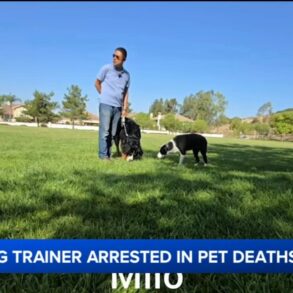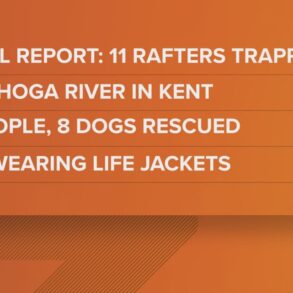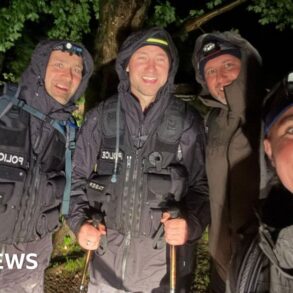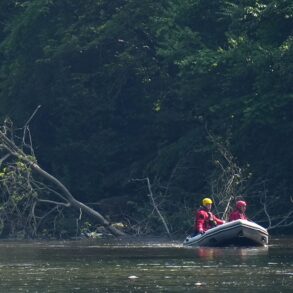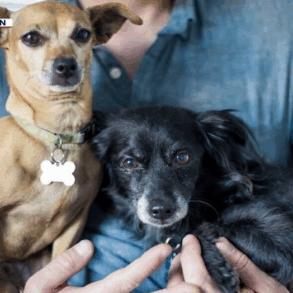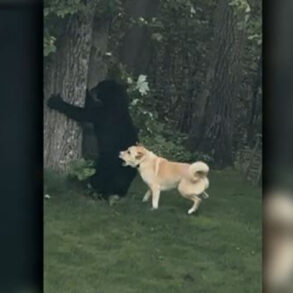You can smell the sky. Eye-squinting blue like the turquoise found deep in the earth here, it is a mélange of creosote, hot sand, and legends. You’ll chase your dog through mystical country of skin walkers and ancient peoples who still fear them. That’s where the sun lives, they’ll say, bringing life to this unforgiving country—and that life includes quail.
Advertisement
They skitter and skulk among the cactus and arroyos of this unforgiving landscape. Putting birds in the air requires an experienced team of humans and dogs that know when to point and when to push. New Mexico quail country is a vast, hot, dry, unforgiving land. But you’ll find Gambel’s and scaled quail—two species on many bucket lists, including mine.

Gamble’s Quail or Scaled Quail?
Deming, New Mexico in the Chihuahua Desert was our jumping-off point. We roamed Bureau of Land Management ground southeast of town, pummeled by blast-furnace winds, vicious scenting conditions and of course, cactus. It’s a surreal landscape resembling a painting by Salvador Dali; you could easily imagine a pocket watch going limp, melting in the mid-day heat. Then you glimpse a male Gambel’s quail searching for his friends and the chase is on.
Advertisement
Or was it a blue quail? Also called cotton-top or scaled, part of the magic here is you never know which species might streak past or erupt from a prickly pear thicket. Native legends portray these diminutive birds as tricksters, ephemeral spirits outwitting both coyotes and spirits. From calls that are similar, to running together in a mixed covey, to a thundering flush more like sharptail, these birds intrigue and puzzle hunters.
The sun bakes sand, cactus, yucca, and creosote bushes that seem to reach out to poke, puncture, scrape and stick you and your dog. There is no cover because everything is cover—a vast featureless tableau of identical shrubs on a table-flat landscape. My hunting partner Bob King advised, “If you hit anything, run to it,” before your eyes blur and the bird evaporates in a sea of gritty sand and lookalike shrubs.
But in this stark environment is a Zen-like peace, periodically interrupted by moments of chaos when you hear flushing birds. “Hunting with our ears as well as our eyes,” King said. The wildest birds I’ve ever encountered, both quail live in perpetual fear of predators from hawks to Gila monsters, on guard constantly and easily pushed into flight. Hear a flush, move there. Stand by for another. And every once in a while, one of our motley crew of dogs slows, stops, and a tail rises. We follow its nose into a prickly pear and up goes a cotton-top.
Not too far up is where avian predators cruise. Birds fly just high enough to clear the vegetation. That’s my go-to excuse for bad shots.
Advertisement
Or was that a Gambel’s quail? Often, you never know until your dog risks a poke in the nose from a cactus spine and grubs the bird from its resting place. In hand, they’re easy to distinguish, scalies covered in feathered armor worthy of the name, and a mullet-like crest tipped in white. Gambels’ topknot and cinnamon-brown cap are unmistakable.

Challenges of Quail Hunting in the Desert
What may be the ultimate joy in these two quail species isn’t the hunting. It’s a fleeting chance to wander in their world, enveloped in the spirit of the Old West and older cliff-dwelling peoples. The foreign-ness is what calls many of us to New Mexico—we know less about this state than Arizona and Nevada, for example, and it is called “The Land of Enchantment” after all. Stars like spilled diamonds on black velvet; pungent plant life assaults our nostrils. A buzz and rattle, coyote howl, vulture lazily circling overhead remind us we’re not in Kansas anymore.
When they’re not flushing wild out of range (going ever out-er), they’re running like spilled ball bearings, a confusing and effective distraction to dogs and shooters. We split up after a few hard-won lessons and prosecute a pincer movement. If you’ve ever hunted ringnecks in standing corn, you’re halfway to mastering this strategy. But in New Mexico, nobody blocks—they all move, starting up to a quarter-mile apart, dogs helping. We converge at a nebulous point in the distance hoping scalies are confused enough to stay on the ground until we get there.
Sometimes, it works, and one or more dogs freeze, nostrils flaring. Magpie is colored like the bird, a shorthair Bob found in the newspaper classified ads. Her vivid black-on-white coat makes it easy to spot her on point, and in this case, we all circled the head-high creosote bush with hopes of a covey bust. When one bird emerged and someone took the shot, the rest of us kept our eyes on the massive shrub, hopeful. But the rest of those birds had peeled off during the chase, evaporating like ghosts. When Magpie brought the one scalie to Bob, gently cradled in her mouth, I was reminded it’s not the pedigree that matters, but the heart in the dog. He watered her from a collapsible bowl, where I learned a most valuable hack in country where every drop is precious cargo. Keep a water bottle (or more) just for your dog, offer it in the bowl, return undrunk water to the bottle. No squirting, dripping, and waste—just be careful which bottle you drink from!
We pushed one of the many shallow arroyos—dry streambeds—that might see a torrent during rainy season but serve only as escape routes for Gambel’s quail the rest of the year. Tracks in the grainy sand told a story of running birds, wing marks showed where their nerve had crumpled and they’d taken off for points farther up, out, and away. We followed.
Unlike their “gentleman” bobwhite cousins, scaled and Gambel’s quail will vex dogs and their handlers. But just when you’ve given up and wished you’d brought close-working springers, a pair will hunker down under a cholla cactus, seemingly waiting for your arrival, out of breath and itching to shoulder your gun. The dog quivers, for there is little to block his view of the birds. We converge, quail scatter, and guns announce the flush to friends in the distance. Until you put your six-month-old wirehair puppy on the sand.
Flick had hunted his way across the Midwest in this, his first season, and was ready for his fifth game bird species when he slammed into a big-boy point. Focused like a laser on the leggy pup, I worried about his steadiness, cactus, and snakes. Plotting a ruler-straight route toward the bush he pointed, my eyes never left my young companion, trembling in his new-found discovery. After energetic kicks at the creosote bush put nothing in the air but dust, I scanned the distance and found the slobbering, clueless black steer whose scent that had entranced my dog’s nose.
We drove from good-looking spot to better-looking spot. Had the weather been cooler, we’d have hiked deeper into the canyons and hills of the Florida Mountains, but with plenty of quail on the flats, and a scorching sun, we started and ended early. The length of a New Mexico quail hunt is often measured by how much water you’re willing to carry, most of it going into your dog.
There are other canine concerns as well: rattlesnakes slither from shade to sun depending on the ambient temperature; scorpions are active at dusk; cholla cactus will “jump” onto a dog, and prickly pear and barrel cactus spines can spear human and canine. Heat-related illness is a constant threat in the desert, inflamed pads from 130-degree sand often manifests itself the next morning when your dog emerges from his crate gingerly. A roll of duct tape serves as my go-to dog boot. Wrapped loosely, Roman-sandal style from toes to ankle, it protects a dog foot from hot sand, cactus spines, and sand burrs. When it falls off, you’re out a few cents, not the price of a large pizza.

The Essence of New Mexico Quail Hunting
The birds are native and wild, and that alone might beckon you all the way to New Mexico. Adding two species to your life-list might be your goal. Walking forests of gaunt, humanoid shapes that morph into plants when the sun rises might be part of your adventure. Ancient civilizations, mysterious rock art, and a vortex or two offer a magnetic pull to some.
For us, it was the hunt. Heat waves rising from gritty sand, we followed a shorthair named Georgia toward the Florida Mountains. Their jagged, distant pinnacles like saw teeth cut into a cerulean-blue sky, and our noisy approach prompted a single blue quail to panic, flying wild to our left. Georgia spun and locked up, and Bob swung hard right to left. One down, the signal for another to rise on the same flight path and into Bob’s shot string. We moved toward the drop zone and marked it with a hat. All hands on deck, and soon four dogs were snuffling among the Ocotillo and prickly pear until my older wirehair struck a half-assed point at the base of a cactus thicket. As his haunches braced for a leap into the pincushion, I ordered a “whoa” and dug deep at the base for a cotton-top that had made it to a critter hole before expiring. Disaster averted, we watered dogs and counted blessings.
No matter the initial attraction, New Mexico will compel you to think differently, observe from a new perspective. Your dogs will puzzle at a world of pointy-dry-and-harsh. You will gasp for breath from heat, cold, altitude, or astonishment. It’s no wonder some of North America’s most transcendent cultures and spiritual peoples found a home there. Pictographs to cliff dwellings, their stamp is everywhere from the state flag to a mesa looming in the hazy distance.
On our last hunt of the day, dogs ranged wide (of course) then came a wild flush underfoot. Someone’s whistle sounded hawk-like enough and the rest of the covey froze, awaiting their fate. My mature wirehair swung downwind, got a whiff of feathers, and screeched to a halt. We flanked the skeletal bush, its branches like arms outstretched in search of enlightenment. Two birds went our way, dropping to simultaneous shots, and the race was on. Was it that cactus or the one beyond where mine fell? Bob dove into a prickly pear to pull his bird, and my dog swapped ends and bee-lined for the bush 20 yards beyond my mark. A few minutes later his proud, bouncy trot back to us was unmistakable: a successful fetch.
When we joined up to compare notes (okay, to brag) sure enough, one hunter held a scalie and the other a Gambel’s. Subtle grays and browns when a dog points, richly-hued and vivid markings once in hand, they are the essence of New Mexico. Couple their enchantment with distinctive sights, sounds, smells, and a sky bigger than Montana’s, and you’re touching the very soul of the state—and acquiring a new state of mind.
This post was originally published on this site be sure to check out more of their content.



